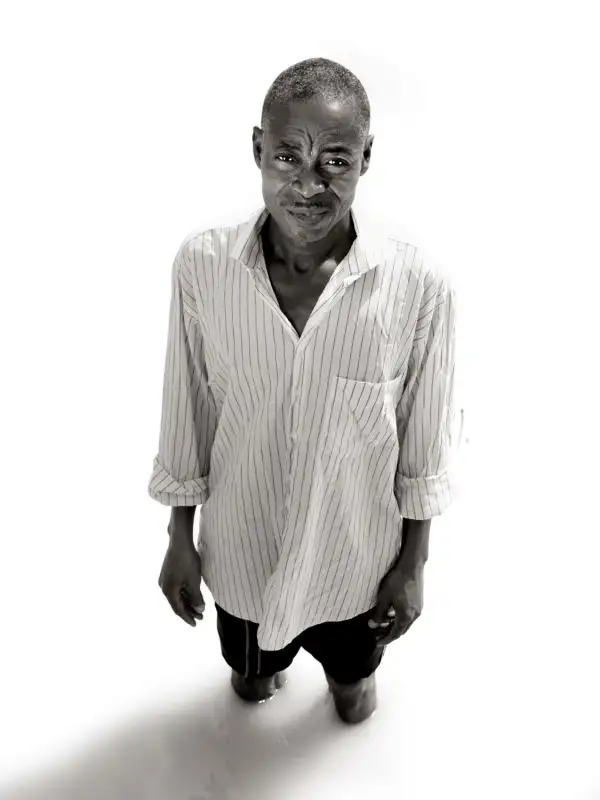$800,000 Saved, Dreams of Breeding Horses

Growing up in Kentucky, Bobbie Jackson vividly recalls when her family got their first horse. It was an older brother's 16th birthday, and for his present he chose not a car but a steed.
Ever since then she's loved all things equine. "Horses are such majestic animals," she says. "The fact that I can interact with them just thrills me."
So when she and her husband, Mike, moved in 2007 from St. Louis to a family home he inherited on 150 acres in Tennessee, Bobbie's first thought was raising horses. Having worked with autistic children in schools and respite centers, she got the idea to offer free therapy rides and to sell horses to families with special-needs kids.
As for Mike, a retired engineer, he's interested because his wife is: "I've got plenty of reasons to get up in the morning already, but it is fun to see Bobbie happy."
The Jacksons have two mares (one a miniature) they wish to breed, and also want to buy three foals. They expect to need a barn for hay storage and a run-in-shelter for the horses. Plus, they want to update the farmhouse they call home.
With $800,000 in savings and an income of $93,000 from a pension, Social Security, dividends, and interest, the couple are well positioned for a comfortable retirement. But they're worried about whether they can also execute their horse farm and renovation plans without a hitch.
"I don't require a certain income from the business," says Mike, "but I'd like to earn enough to more than offset expenses."
THE REALITY
Making a profit will be tougher than Mike thinks. Starting up will take some investment: The biggest cost will be the hay barn and run-in shelter, which prefab farm structure company Watson Metals in Manchester, Tenn., puts at $15,000 to $25,000.
Related: Banker finds sweeter career: Making ice cream
The kinds of horses Bobbie and Mike are looking for -- mixed breeds -- are cheap right now, selling for 30% less than they had been before the recession, says Nona Garson, head of the InterContinental Sport Horse Auction. So the couple should be able to pick up foals for less than $500 apiece.
Additionally, to get specialty insurance needed to cover liability risks involved in hosting therapeutic riding, they first need to get certified in equine-assisted therapy, which costs $1,000 per person and can take six months to a year.
Where the Jacksons will really take a hit is in the cost of running the business. They'll lay out about $2,500 a year per animal for food, vet bills, and hoof care. Farm insurance adds another $2,000 a year -- though it includes homeowners coverage, which they already pay.
The Jacksons are currently maintaining two horses, so three foals and insurance premiums will add about $10,000 to their expenses. They can probably find a stud for the horses for about $500, says Rebecca Smith, a breeder in Chagrin Falls, Ohio. But caring for a pregnant mare during its 11-month gestation tacks on another $1,000 to $2,000. Then foals typically require at least nine months of weaning and training before they can be sold.
Since the Jacksons don't plan to charge for the therapy rides -- "How can I not help these children?" says Bobbie -- they won't see revenue for some time. Even then, it won't be much: A good market for buying horses is a bad market for selling them. And the universe of families looking to own a horse for a special-needs child is probably quite small.
All told, while Mike was aiming for a small profit, he's more likely looking at tens of thousands in losses each year, for quite a few years.
As for the renovation costs, Bobbie and Mike figure their home upgrades will run $65,000.
THE PLAN
"They can still do this -- as long as they're willing to put limits in place," says Grove City, Ohio, financial planner Jo Anne Paynter (herself a rider). Here's how:
Fund the business out of income. The Jacksons spend a lot less than they bring in each year. Mike estimates that they have an average surplus of $22,000. Keeping their horse expenses below that would allow the couple to run the business without dipping into savings -- which will in turn help them preserve the income they'll need for the business, says Paynter. Their wiggle room will get smaller as they add animals.
But Mike and Bobbie can decide each year whether to expand based on their anticipated cash flow (which will go up once they start taking required minimum distributions from retirement accounts).
Determine whether it's a labor of love. The Jacksons should think hard about whether they want to proceed with their dream as is, even if they won't break even. They might consider whether there's anything else they'd want to do with the money they'll spend on horses; they should also create a business plan.
To increase their revenue potential, they could charge a fee for the rides to cover their costs or expand the market for the kid-friendly horses they'll breed to 4-H and pony clubs and the like.
Pay for renovations out of cash. Assuming they keep the cost of the farm buildings and upgrades to their home to $90,000 or less, the Jacksons can use their savings for those purposes without compromising their income potential, says Paynter. They should draw from the $250,000 they have in bank accounts.
Protect their assets. Besides getting insurance -- a must -- they should incorporate their business, a legal process that should cost less than $500.
"This would further insulate them from liability," says New Hope, Pa., financial planner Mark Kelly. If they are sued, for instance, their personal assets wouldn't be at risk.
So far none of the hurdles have shaken Bobbie; rather; she's fortified by having a plan. Says Mike: "She's already laying out cross fencing for me to do!"
More from Live your dream: What you'd do if money were no object:
